Does High Heat Ruin Non Stick Pans? (Explained)
What Happens When Nonstick Pans Are Overheated?
If you’re wondering whether high heat can ruin your non-stick pans, the answer is yes. High heat can cause the coating to break down and release harmful chemicals into your food. If you’re using a non-stick pan, be sure to use it at a lower temperature to avoid damaging the pan.
The Author
Non-stick pans are nowadays trending modern utensils found in every kitchen.
People have now switched to modern non-stick pans from their traditional pans.
These non-stick pans are nothing different but traditional pans coated with different types of chemical coating.
This coating helps in cooking food at very less consumption of oil and butter and does not even stick to the pan surface because of the non-stick coating.

Several facts need to be considered when using a non-stick pan.
Because coating of the non-stick pan can turn toxic at high temperatures, and if some of the coatings start peeling off from the pan, it may react with the food and make it toxic.
These toxic foods on eating may cause several diseases.
If a new pan is overheated, then the polished non-sticky property is lost first, and then the rest of the coating starts deteriorating.
Non-sticky pans and their coatings
There are several non-sticky pans categorized based on their coating.
Teflon pans
The first and most used non-sticky pan is Teflon pan.
These pans are made of Polytetrafluoroethylene (PTFE) or Perfluorooctanoic acid (PFOA).
These coatings are harmful when cooked at high temperatures.

They are good for using under 260ﹾC of cooking but difficult to monitor when used in a gas stove.
When these pans are overheated Teflon gas is secreted from the pan due to the burning of the pan, which is carcinogenic.
Silicon pans
A rubber-like material made of silicon is used for coating these types of pans.
This type of pan has a higher value of overheating temperature compared to Teflon pans. It starts burning at a temperature of 300ﹾC.
These pans can be used in the oven as well but at a limited temperature.
Super-hydrophobic pans
This type of pan is made of nanoscopic coating and is very costlier. The nanoscopic coating makes the surface more slippery.
Because of the water-resistance property, any food having low moisture in it can be cooked in these types of pans without sticking.
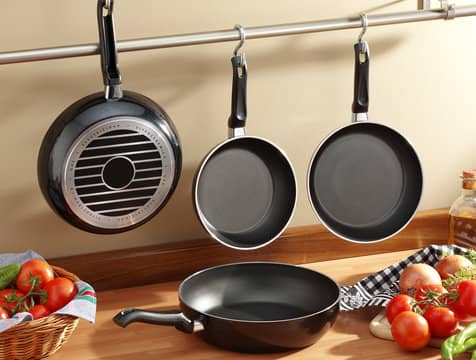
These pans are mostly on research and not readily available in the market.
Overheating destroys the coating surface luster and makes it toxic when mixed with the food.
Anodized aluminum pans
These are nothing but normal aluminum pans that are catalytically reacted with aluminum oxide.
Aluminum is a good conductor of heat and it can handle a temperature up to 176 ﹾC. But when it is anodized the maximum limit increases to 280 ﹾC.
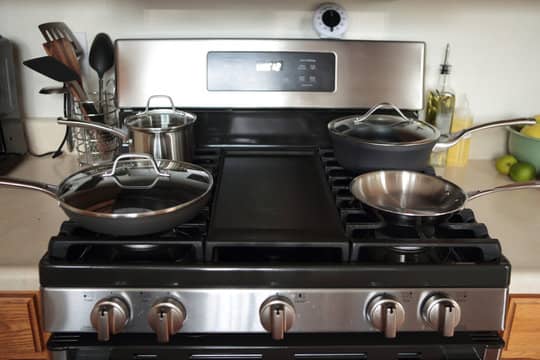
Beyond this temperature, aluminum reacts with food and increases aluminum quantity in the food.
If the aluminum is above the daily average value, this may turn toxic to health.
Seasoned cast iron
These are traditional cast irons that are widely used. Seasoned is mentioned before cast iron because it is seasoned with edible oil.
Mainly spreading some oil all over the surface of the pan and heating to a temperature where the pan starts releasing fumes.
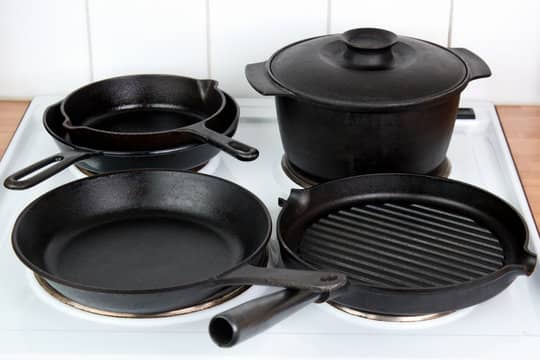
These fumes are not dangerous, they just burnt oil.
But this seasoning makes it non-sticky to some extent but needs to be seasoned regularly.
It can be used for cooking at very high temperatures but is limited to non-acidic foods only.
If the food contains acids then iron reacts with it to form toxic material.
Enamelled cast iron pans
These types of pans are prepared by melting glass powder on the surface of cast iron at a temperature of 760 ﹾC.
This coating gives a glossy finish to cast iron pans and makes them slippery.
Even if acidic foods are cooked in this type of pan the food will not get in contact with the pan surface.
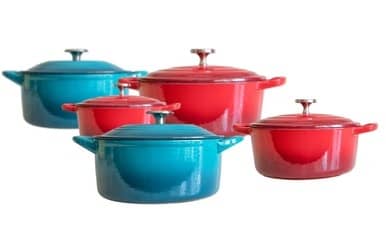
These types of pans can be heated up to 700 ﹾC and beyond that temperature glass coating, reaches starts transforming to liquid.
So, overheating must be avoided.
Ceramic pans
Ceramic coatings are natural coatings so having this type of coatings is safe. These pans are comparatively less slippery than other non-stick pans.
Although this type of pan is readily available and safe as well, this coating tends to lose slipperiness on overheating.
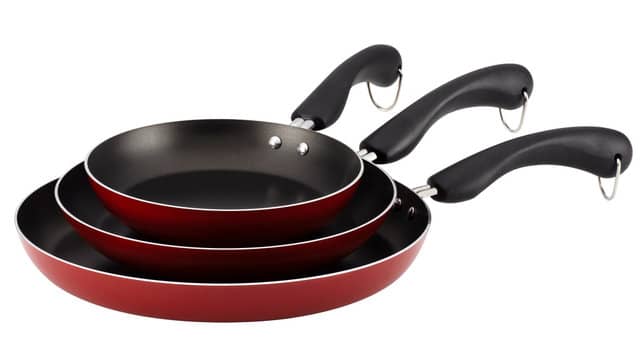
The colors of the pan also get deteriorated from overheating.
Although coatings are natural and do not cause any harm, some companies use artificial granites for coating which can be carcinogenic.
How to Avoid Overheating & Extend Its Lifetime
Overheating has always been an issue with non-stick pans but with proper preventive measures, this can be avoided.
The main role of overheating is played by heat and temperature the pan is exposed to and the second is the duration for which the pan is under heat.
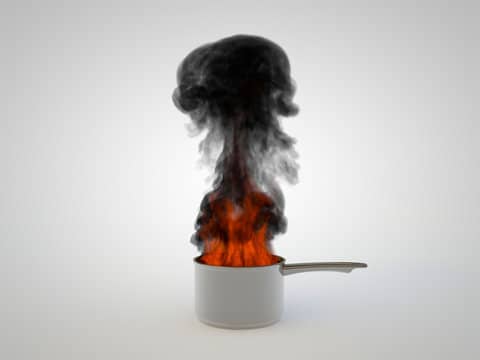
Keeping a track of the temperature and heat can surely avoid overheating.
Keeping a minimum amount of water in any type of food that you cook always helps in keeping the temperature checked.
If a dry pan is heated it reaches maximum temperature very easily.
So avoid keeping a dry pan exposed to heat for a longer time.
Sometimes we cook two things simultaneously and we may not able to coordinate with both the foods properly at a time, causing overheating of the pan.
So always keep a track of time to avoid overheating.
Final Thought
Any kind of non-stick pan must be kept in check for overheating issues.
As we have learned that overheating destroys the coating and sometimes coating itself melts to mix with the food on overheating.
Eating this type of food may cause serious health issues. So keep a check of the temperature to which pan is exposed.
There are a few types of pans that can sustain a very high temperature. Mostly cast-iron pans and ceramic pans can sustain above 500 ﹾC.
But it is always better to avoid such a high temperature.
Although cast iron is good but has limitations against lime, sauce, and similar other products.
Also, for ceramic, the pan has to be chosen wisely so that it is not made of artificial granite.
Even at very high temperatures, ceramic pans tend to lose their luster and gets faded. So choose the best plan based on need.
It is sometimes better to use traditional pans rather than modern non-stick pans.
